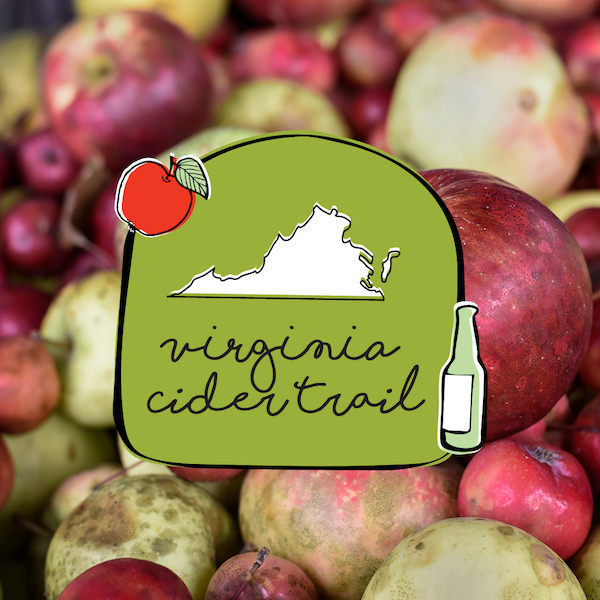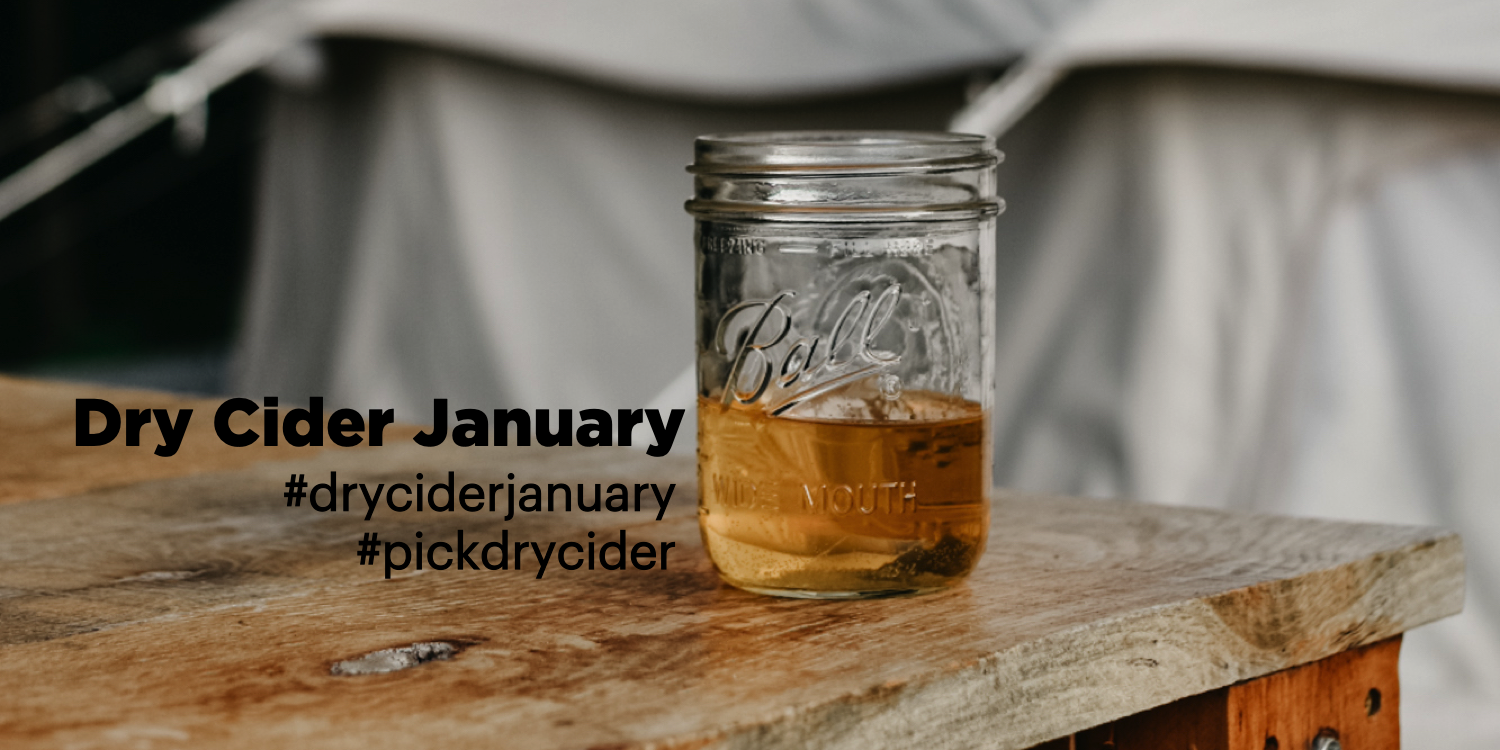Press Release
Eight Scholarships Awarded to BIPOC Recipients Across the Country for CiderCon® 2023
Sponsored by Yonder Cider, in collaboration with American Cider Association and Beer Kulture, the CiderCon® scholarship program returns for its second year with more applicants and awardees than ever to bring new people of color from historically marginalized groups
CHICAGO (January 12, 2023) – Yonder Cider®, Beer Kulture and the American Cider Association (ACA) are excited to announce the awardees of the 2023 CiderCon® BIPOC (Black, Indigenous, People of Color) Scholarship. Eight individuals – including six cider passionate individuals and two media attendees – received scholarships to attend the annual conference, taking place January 31 – February 2 in Chicago, Illinois. This scholarship is designed to bring people of color from historically marginalized groups to CiderCon® to increase the accessibility of cider education and jump-start the careers of these cider professionals. Receiving more applicants than the previous year, the scholarship – now in its second year – has grown from three scholarships to eight, with awardees from seven different states across the country.
“This scholarship is really a gift for the cider industry as a whole,” said Caitlin Braam, founder of Yonder Cider and founding chair of the ACA’s Antiracism, Equity and Inclusion committee. “Diversity brings more ideas, new creativity, and broader perspectives, ultimately making a stronger and better cider community. It’s encouraging to see the efforts of this committee continue to grow and it’s truly a privilege for Yonder to be able to fund this important initiative.”
Each scholarship includes registration, travel and lodging to attend CiderCon® 2023 in Chicago. Additionally, scholarship recipients are offered training materials and waived exam fees to pursue becoming a Certified Cider Professional and Certified Pommelier™.
This year’s awardees include:
Scholarship Awardees
Monique Gray, California
Anthony Lopez, California
Gabriela Muñoz, Minnesota
Olivia Pener, Missouri
LaShanda Poteat, North Carolina
Chanell Williams, Washington
Media Sponsorship Awardees
Adrian Luna-Verduga, New Jersey
Ruvani de Silva, Texas
This scholarship is part of a broader effort by the ACA to advocate for diversity, equity, and inclusion. In 2019 the ACA launched the Antiracism, Equity and Inclusion committee which recognizes diversity, equity and inclusion as an important and necessary part of present and future successes of the cider industry. This committee structures its work around a belief that existing structures of power, privilege and discrimination must be actively questioned and evaluated in order to create equitable opportunities in an environment that embraces and values our differences. They strive to create events, opportunities and organizational policies that embody these values, and to continue evaluating these practices for sustained growth and improvement.
The ACA first partnered with Beer Kulture in 2021. Beer Kulture works in the broader craft beverage space to support professional opportunities for people of color. “By bringing more people of color into the craft beverage industry at every level, we aim to create new possibilities, not just as workers, but as founders, too. This is our hope for cider and why we’re excited about these scholarships,” said Latiesha Cook, CEO and President, Beer Kulture.
“This scholarship is one of many ACA initiatives to create a more diverse cider industry,” says Michelle McGrath, Executive Director of the ACA. “The scholarship needs to work in lock step with our efforts to create a more inclusive industry so that, as we have more diverse CiderCon attendees, they are surrounded by a welcoming community and equitable environment.”
CiderCon® is the world’s premier networking and educational event for the professional cidermaking community. CiderCon® 2023 will take place in Chicago, Illinois from January 31 – February 3, 2023 at the Hilton Chicago. Registration is now open and available at ciderassociation.org/cidercon2023. Individuals interested in applying for the CiderCon® Scholarship next year are encouraged to sign up for notifications here.
Further information, media interviews, awardee bios and photos available upon request. Please contact Michelle McGrath at michelle@ciderassociation.org.
About Yonder Cider
Best Enjoyed Anywhere. Yonder Cider was started to bring full-flavored, delicious cider to every occasion. Picked and pressed in Wenatchee, Washington – the heart of Apple Country – we create cider that’s as balanced, bright and complex as the land itself. Crafted using a blend of bittersweet cider apples and juicy dessert apples, our ciders are hardly simple, and never straightforward, but you can always count on them being interesting. Founded August 2020, Yonder Cider is available in 16-ounce cans and on draft throughout Washington state and online at yondercider.com. For more information, follow Yonder Cider on Instagram and Facebook (@yondercider).
About the American Cider Association
The American Cider Association is an organization of cider and perry producers in the United States. It gathers and shares information about cider production, regulations and cider apple growing to help members improve their operations, raise awareness and advance cider in the market. The organization was founded in February 2013. Learn more at ciderassociation.org.
About Beer Kulture
Beer Kulture is a nonprofit advancing opportunities that foster diversity, equity and inclusion within the craft beverage space. Since 2017, Beer Kulture has been a community resource and has demonstrated commitment to the work necessary to advance the Kulture forward. Learn more at beerkulture.com.
###
ACA Announces Registration is Now Open for CiderCon® 2023!
The American Cider Association is pleased to announce that CiderCon® 2023 will take place in Chicago, Illinois from January 31 – February 3, 2023. With tours, tastings, educational workshops, demos and more, CiderCon®’s Chicago homecoming is set to be an educational celebration of all things cider. Registration opened on September 29, 2022.
After a four year hiatus, the return of CiderCon® to Chicago has been much anticipated and the ACA has been working with folks on the ground in the Windy City to make the homecoming spectacular. This includes four exciting tour options: a look at Chicago’s history through the lens of taverns, a tour of the Bronzeville neighborhood in Chicago’s historical south side, a tour visiting three unique Chicago-based cideries, and a cider and architecture tour featuring the stunning works of world-famous architect Frank Lloyd Wright.
A full range of educational sessions will cover topics of cider production, marketing, sales, branding, sensory evaluation, compliance, business strategy, orcharding and more. Speakers include Claude Jolicoeur (author of Cider Planet), Yann Gilles (cider and wine consultant from France), Lester Jones (Chief Economist from NBWA), Julie Rhodes (Not Your Hobby Marketing), Mary Mills (3 Tier Beverage), Dr. J Nikol Jackson-Beckham (Brewer’s Association and Crafted for All), Elizabeth Ryan (Hudson Valley Farmhouse Cider), Bryan Roth (Good Beer Hunting), Liz Garibay (Chicago Brewseum), Elizabeth Garofalo (Red Tomato Food Hub) and many more, plus new presenters joining every day.
“We have so many amazing sessions already lined up and others in the works, “ said ACA Executive Director, Michelle McGrath. “We’re emphasizing cider quality, terroir and retail strategy this year. It’s been rewarding to think about the impact of CiderCon® on the industry, and to rise to the challenge of deepening that. CiderCon® is very special and we’re committed to improving it every year.”
The extensive trade show, presented by longstanding ACA partner FruitSmart, will feature many beloved vendors excited for the return of CiderCon® to Chicago and welcome several first time vendors eager to join the cider community and meet conference attendees.
Tickets to CiderCon® are just $425 for for ACA members if booked by October 22. After October 22, member registration rates become $475. Public tickets are $725 for early registration and $775 after October 22.
More information about the wide array of events and educational sessions being offered and registration can be found on the CiderCon® website and you can follow @cidercon on Twitter for the latest news. CiderCon® is an ACA event produced with the generous support of our members and ACA’s premier sponsor, FruitSmart.
###
ACA To Hold August 18 Certified Pommelier™ Exam in New York
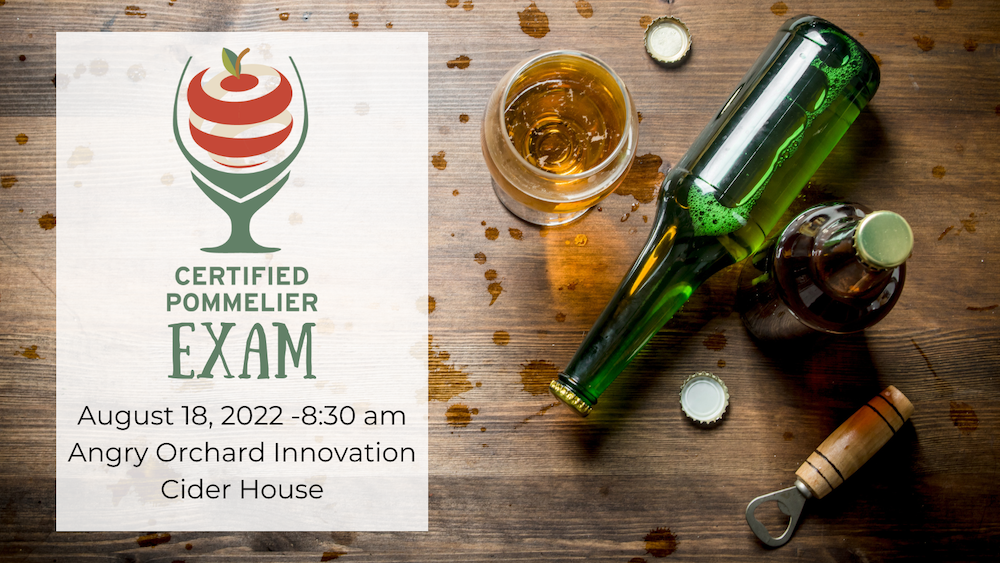
The American Cider Association (ACA) will be holding their third Certified Pommelier™ exam of 2022 in Walden, New York on August 18 at the Angry Orchard Innovation Cider House. Cider’s popularity has dramatically increased in the last several years, but that doesn’t mean the food and beverage community understands this exciting beverage category. That’s why the ACA created a way for food and alcohol industry professionals to, not only gain knowledge and expertise, but also to prove their cider knowledge through our Certified Cider Professional program (CCP).
“At the center of what we do at Angry Orchard is innovation, and education is at its core. We’re thrilled to host a Certified Pommelier™ Exam on the east coast and give more industry members the opportunity to advance their education,” says Will Loughlin, Certified Pommelier™ and Assistant Cidermaker at the Angry Orchard Innovation Cider House. “We see the Pommelier™ Certification as an excellent tool to highlight exceptional individuals, as well as the cider industry as a whole. We’re thrilled to see interest in the exam growing and gaining more standing alongside wine and beer programs.”
There are two levels of certification available in the CCP program. Level 1 CCP is designed for people who would benefit from a deeper but still introductory level of cider knowledge. The ACA has created a bundle that includes an on-demand webinar, study guide, and two online test attempts. The more advanced Certified Pommelier™ test covers more in depth cider knowledge, including sensory evaluation. Successful completion of Level 1 CCP is required to sit for the in-person Certified Pommelier™ exam.
“We really want people to learn about cider and see what a nuanced and exciting beverage it is. That’s why we’ve created study guides, reading lists, webinars, and a Facebook group to help people study for the Certified Pommelier™ exam. It is rigorous, but we want to set people up to succeed,” states Jennie Dorsey, ACA Cider Education Outreach Manager.
If you are interested in learning more or sitting for the exam, you can head to the ACA’s Certification website or contact Jennie at jennie@ciderassociation.org.
###
ACA Welcomes 9 New Certified Pommeliers™

The American Cider Association is thrilled to announce that for the second time in 2022, nine people have passed the Certified Pommelier™ exam. The exam was held June 20 in Seattle, Washington at Seattle Cider Co. The new Certified Pommeliers™ are Sara Cravens of 2 Towns Ciderhouse, Nick Hill of Puget Sound Cider Co., Timothy Powers of Commonwealth Wine School, Dave Klawer of Alma Cider, Kate Pinsley and Suzannah Klaniecki of Schilling Cider, cider enthusiasts Storie & Erik Madrid and cider influencer Alexsis Cassady (@ciderminded).
Cider is a beautifully nuanced beverage with a diverse set of elements that are often misunderstood by food and beverage professionals. Certifications are increasingly used in the professional realm to set oneself apart as an individual with specialized knowledge, though cider is often covered in a cursory manner by most certification programs, if at all. This led the American Cider Association to establish its Certified Cider Professional (CCP) program to educate those on the front-line of cider sales.
The Certified Cider Professional program began with a Level 1 certification to help those in the industry develop a fundamental understanding of cider. The Certified Pommelier™ certification was developed to move beyond a fundamental understanding and to encourage cider professionals to think critically while demonstrating a higher understanding of the elements of cider. The rigorous test consists of five types of questions: short answer, fill in the blank, matching, essay and blind sensory (based on tasting).
“The Certified Pommelier™ exam is designed to be challenging, ” says Michelle McGrath, Executive Director of the ACA. “However, accessibility remains important. We’re rolling out more and more study aids in 2022, with a book on the horizon.”
The next Certified Pommelier™ exam is planned for August 18, 2022 in Walden, New York at the Angry Orchard Innovation Cider House and will be the last opportunity to take the test before CiderCon® 2023 in Chicago, Illinois in February 2023. You can learn more and register for the New York exam on the ACA website.
The ACA asks that you contact Cider Education Outreach Manager Jennie Dorsey if you have questions about the program or are interested in taking either the Level 1 Certified Cider Professional test or the Certified Pommelier™ exam. You can also learn more at https://ciderassociation.org/certification.
ACA Launching New Digital Virginia Cider Trail

Participants will be able to check in to participating cideries for a chance to win prizes including a cidery Airbnb stay at Chesapeake Bay
On July 6, The American Cider Association, is launching a digital Virginia Cider Trail to encourage Virginians and visitors to explore the Commonwealth’s hard cideries and celebrate Virginia’s unique apples. The American Cider Association is the official organization of cider and perry producers in the United States representing cideries across 44 states and DC. They are working closely with the Virginia Cider Association to highlight the incredible ciders and apples made in the state.
The digital Virginia Cider Trail is a free program that all Virginians or visitors of age 21 and over can sign up for. The mobile exclusive passport is a curated collection of 29 Virginia cideries, with many offering unique deals and discounts that guests can redeem during visits. The trail is a year-long offering that will run through June 25, 2023, and more cideries are expected to join throughout the year.
Participating cideries include:
- Albemarle CiderWorks, North Garden
- Big Fish Cider Co., Monterey
- Blue Bee Cider, Richmond
- Blue Toad Hard Cider Cidery & Event Barn, Roseland
- Bold Rock Nellysford Cidery, Nellysford
- Bryant’s Cider, Richmond
- Bryant’s Cider & Brewery, Roseland
- Buskey Cider, Richmond
- Ciders From Mars, Staunton
- Corcoran Vineyards & Cidery, Waterford
- Courthouse Creeks, Maidens
- Coyote Hole Ciderworks, Mineral
- Ditchley Cider Works, Kilmarnock
- Halcyon Days Cider Co, Natural Bridge
- Henway Hard Cider, Bluemont
- Lost Boy Cider, Alexandria
- Moss Vineyards, Nortonsville
- Mt. Defiance Cidery and Distillery Cider Barn, Middleburg
- Old Hill Cider, Timberville
- Old Town Cidery, Winchester
- Potter’s Craft Cider, Charlottesville
- Sage Bird Ciderworks, Harrisonburg
- Sly Clyde Ciderworks, Hampton
- Stable Craft Brewing, Waynesboro
- Sugar Hill Cidery, Norton
- The Winery at Kindred Pointe, Mt. Jackson
- Tumbling Creek Cider Company – Taproom, Abingdon
- Widow’s Watch Cider, Edinburg
- Wild Hare Cider Cabin, Leesburg
- Winchester Ciderworks, Winchester
“The new digital cider trail is a great opportunity for Virginians and visitors alike to experience all the wonderful cideries in the Commonwealth in an easy, mobile-friendly way,” said Michelle McGrath, executive director of American Cider Association. “Participants don’t even need to download an app. When they sign up for the cider trail, their pass can be saved to their phone’s home screen for easy one-tap access.”
The platform will use geospatial technology that will allow users to simply check in and record visits to count towards prizes and redeem any available special discounts. The first 100 people to check in to 10 locations will win a “Virginia is for Cider Lovers” medal. Each check-in also enters users into a grand prize raffle for a chance to win a cidery Airbnb stay at the end of the year or a Virginia Cider Trail hooded sweatshirt at the end of each quarter.
“Those who opt in to participate in the trail have a whole year to explore all corners of this beautiful cider-rich state. We love the opportunity to get more people familiar with Virginia apples and the cider made from them – and why it’s so special,” said McGrath.
Funding for this project was made possible by the U.S. Department of Agriculture’s (USDA) Agricultural Marketing Service through grant 21 SCBPVA1060-00. Its contents are solely the responsibility of the authors and do not necessarily represent the official views of the USDA.
For more on the Virginia Cider Trail and participating cideries, visit Virginia Cider Trail (ciderculture.com).
###
ACA Announces June Dates for Virginia Cider Ed Road Show

The American Cider Association (ACA) is hitting the road to partner with Virginia cideries and chefs to teach food and beverage professionals about the diversity and versatility of Virginia hard ciders. Workshops will be held in Alexandria, Charlottesville, Richmond, and Hampton during the week of June 6-9, 2022. The events will be free, but sign up is required to participate in these introductory cider education sessions.
Each workshop will be tailored to the cidery and city where it’s taking place with a focus on exploring ciders made with Virginia grown apples, crafting trendy cider cocktails, and mastering delicious cider pairings. Jennie Dorsey, a Certified Pommelier™ and the Cider Education Outreach Manager for the ACA, will be leading the cider learning, tasting and pairing experiences.
The ACA hopes to draw a wide swathe of participants from the food and beverage industry, including bartenders, servers, kitchen staff, distributors, bottle shop owners, and anyone else interested in learning more about cider.
“This is a great opportunity for Virginians to learn more about the cider being made here and help support the growth of the industry in Virginia and beyond,” says David Glaize, a Virginia apple grower and cidermaker who was recently elected to the ACA board of directors.
The ACA is able to offer this opportunity through a grant from the USDA Agricultural Marketing Service, in partnership with the Virginia Department of Agriculture and Consumer Serves and the Virginia Wine Board.
“We see education as vital to the continued growth of the cider industry across the United States. We hope that these events will be something we can recreate in states across the country to help educate food and beverage professionals about cider,” comments ACA Executive Director Michelle McGrath. “But there is something very special about Virginia’s cider–the apples,” she added.
Learn more about the Virginia Cider Ed Road Show and sign up for one (or more) of the events at: https://ciderassociation.org/virginia-cider-ed-road-show/. If you have questions about the Road Show or other cider education opportunities please contact Jennie Dorsey at jennie@ciderassociation.org.
###
ACA Announces Results of Inaugural Harvest Driven Cider Survey
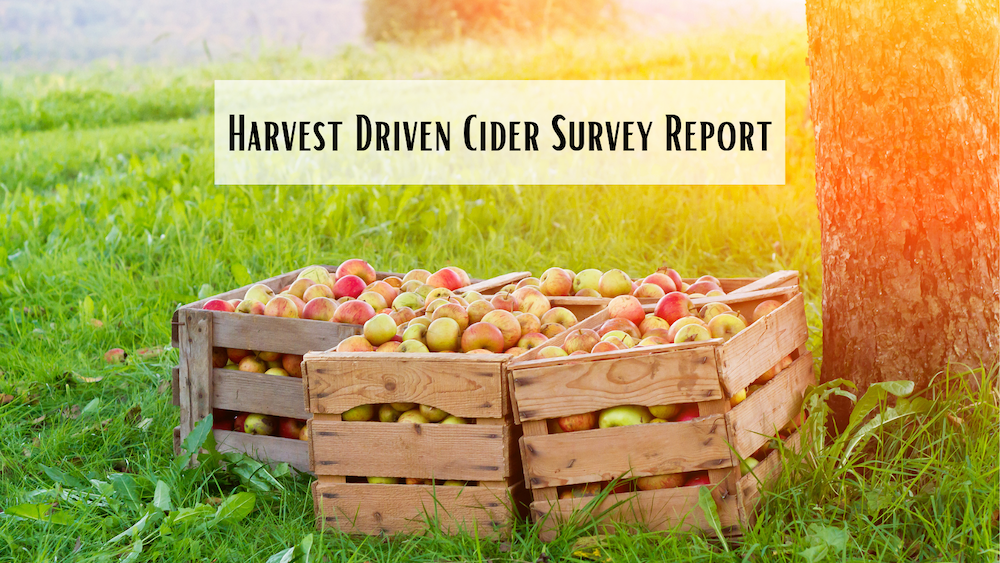
Cider is a beverage category, not a beverage style. This is a leading rallying cry by the American Cider Association, who recently released the results of their new annual survey looking at the segment of cidermakers making cider once a year during harvest season much like a winery. The survey was undertaken in an effort to measure the size and growth of these makers, which the ACA names as harvest driven cideries. These ciders are usually made by small producers, are typically packaged in glass bottles, and are sold through channels that are usually not measured by retail scanner data providers such as IRI. The survey revealed 2021 was a year of significant growth for US harvest driven cidermakers.
For the purposes of the survey, harvest driven cidermakers are defined as those who make 75% of their cider with apples or pears that are pressed at or close to their harvest date and aged at least 3 months prior to packaging. Michael Uhrich of Seventh Point Analytic was chosen to undertake creating and analyzing the survey results.
The conclusion is that the harvest driven cider segment is small but growing. Nearly one million gallons of harvest driven cider was produced in 2021 alone. The harvest driven cider segment share grew by one third from 2020 to 2021, from 1.8% to 2.3% of the US domestic cider market. Production of harvest driven cider also increased dramatically from 2020 to 2021 with an average production increase of 26%.
“This corner of the cider market has been around for decades and has produced some of the more storied brands in our industry, yet we have never had a mechanism for measuring its growth and progress. We are excited to release these first results of what will be an annual survey, and celebrate the growing success of this segment,” says Eleanor Leger, board president of the ACA.
Uhrich also looked at packaging, club, fruit and channel trends for the segment. Uhrich’s webinar report is available to ACA members, but there is a Harvest Driven Cider Fact Sheet available for download here. Please contact Executive Director Michelle McGrath with any questions regarding the harvest driven cider survey process or results.
ACA Receives Grant for “Year of the Apple” in Virginia
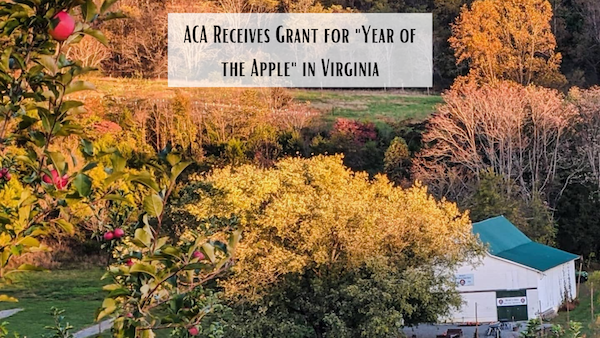
The American Cider Association is proud to announce a new partnership with the Virginia Department of Agriculture and Consumer Services through a USDA Specialty Crop Block Grant awarded for $70,012. Starting in early 2022, the American Cider Association (ACA) and their partners in Virginia cidermaking and agriculture will launch “The Year of The Apple,” an integrated public awareness, food industry professional outreach and market research campaign.
Virginia is the country’s 6th largest producer of apples and home to 48 independent cider makers, from the celebration-worthy bottles to adventure-ready cans. Virginia also boasts perhaps the longest and most storied history of cidermaking in North America, with apple orchards that date back to the 1600s. Yet both the restaurants and food lovers of Virginia don’t choose home-grown cider enough—Virginia has lower sales-per-capita than other cider making states.
Virginia Association of Cider Makers President Anne Shelton is excited about the opportunity the grant may bring. “Our state has a bountiful array of homegrown apple varieties, a deep history of cidermaking, and a super talented community of cidermakers crafting a wide variety of styles. We hope this grant can increase awareness around this with consumers and buyers and promote Virginia apples.”
In addition to creating awareness and understanding around Virginia cider, the grant will pay for survey research to learn more about the supply of the unique mix of apples that grow best as well as more about the state of the cider industry in Virginia.
From Shenandoah peaks to gentle ocean beaches, Virginia is home to a uniquely American diversity of landscapes, people, and ciders. “With just a little reminding, I think the drinkers of Virginia are ready to embrace the diversity and deliciousness of our uniquely Virginian ciders,” says ACA member Courtney Mailey of Blue Bee Cider in Richmond.
ACA Launches 2nd Annual Dry Cider January
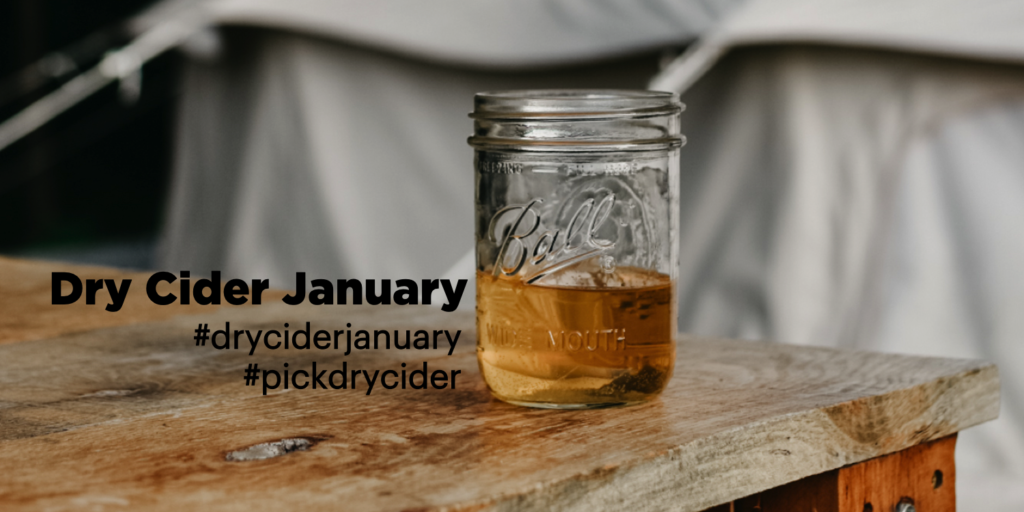
The American Cider Association (ACA) is once again launching their month long campaign called Dry Cider January to celebrate ciders containing 0 grams of residual sugar. The ACA hosts a dry cidery directory on their website to promote their members’ ciders. The association is encouraging others to join the campaign through social media with the hashtags #dryciderjanuary and #pickdrycider.
The ACA’s Dry Cider Directory will be updated as members submit new product releases. The directory can be found here on ACA’s website. The list can be filtered and sorted so consumers can find no-sugar ciders local to them.
Alcohol is created when yeast converts sugar into alcohol through fermentation. A cider that contains no residual sugar has been fermented to absolute dryness. Sometimes cidermakers will blend a completely dry cider with fresh juice for acid/sugar balance, but other times they leave the cider entirely dry. These dry ciders are what the association is listing on their website for the campaign.
“The brain has a hard time distinguishing fruity from sweet. Many ciders with absolutely no sugar in them can still be fruit-forward,” explained the association’s executive director, Michelle McGrath. “You’ll find there are a multitude of dry ciders available when you start seeking them,” she added.
The list of ciders on the association’s website demonstrates the flavors and styles possible not only in the cider category, but in ciders with 0g sugar. From single varietal ciders showcasing specific apple varieties and served in a 750ml bottle to ciders aged on rose and hibiscus petals and served in a 12 oz can, the range is impressive.
Follow the association on their Instagram account @pickcider to learn more about the campaign.
Are you a cidermaker and want to add a cider to the directory? Fill out the form HERE! Have a picture and description of your cider ready to go before you fill out the form.
BREAKING NEWS: TTB Approves Additional Wine Standards of Fill
In a special edition newsletter sent to subscribers on December 28, 2020, the TTB announced new rules regarding standards of fill. The additional volumes approved for wine are:
- 355 ml (12 oz)
- 250 ml
- 200 ml
As all ciders are regulated as wine by the TTB, the above sizes are now being added as approved for cider. This means ciders above 7% will be able to be packaged in a 12 oz can or bottle for the first time. Previously, a state exemption was required to package ciders over 7% ABV in 355 ml packaging.
“These new container sizes will provide bottlers with flexibility by allowing the use of the added container sizes, and will facilitate the movement of goods in domestic and international commerce, while also providing consumers broader purchasing options,” the TTB writes in their newsletter.
The TTB newsletter included a final draft of the rule. The rule includes several mentions of submitted commentary from cidermakers and the American Cider Association (ACA) (formerly United States Association of Cider Makers).
An excerpt: “These producers note that, in the production of cider, apples often naturally ferment to an alcohol by volume (abv) level just above 7.4%, so producers often take steps to lower the abv below 7% so that the standards of fill regulations will not apply, enabling them to use 355 milliliter containers. They state that sugar levels in apples vary widely depending on climate and other factors, making final alcohol levels difficult to predict. They argue that being able to use the 355 milliliter container size will eliminate this uncertainty.”
“The ACA government affairs committee worked to make this happen,” said Michelle McGrath, executive director of ACA. “Additionally, so many of our members came together to provide comments. Our united voices made the difference.”
“ACA believes that this will help apple-focused cidermakers and others with packaging flexibility and compliance,” McGrath added.
The addition of 200 ml containers is also a win for US ice cider producers. “This will help our ice cider business, where 200ml has been a traditional ice wine bottle size outside the US for decades, and we have not had access to that format,” said ice cider producer and ACA board member, Eleanor Leger.
“There are many styles of cider, and packaging flexibility will allow us to deliver the right cider to the customer in the right package. We are excited that we can finally put ciders produced with heirloom and tannic varieties in a more accessible format for customers,” Leger added.
The American Cider Association is grateful to the TTB for providing a platform for industry and public comment. “We are very pleased that the TTB continues to work with industry to evaluate regulation and its relevance to current market conditions,” ACA board President Paul Vander Heide said. “Broadening standards of fill gives our members increased flexibility to serve their customers.”




